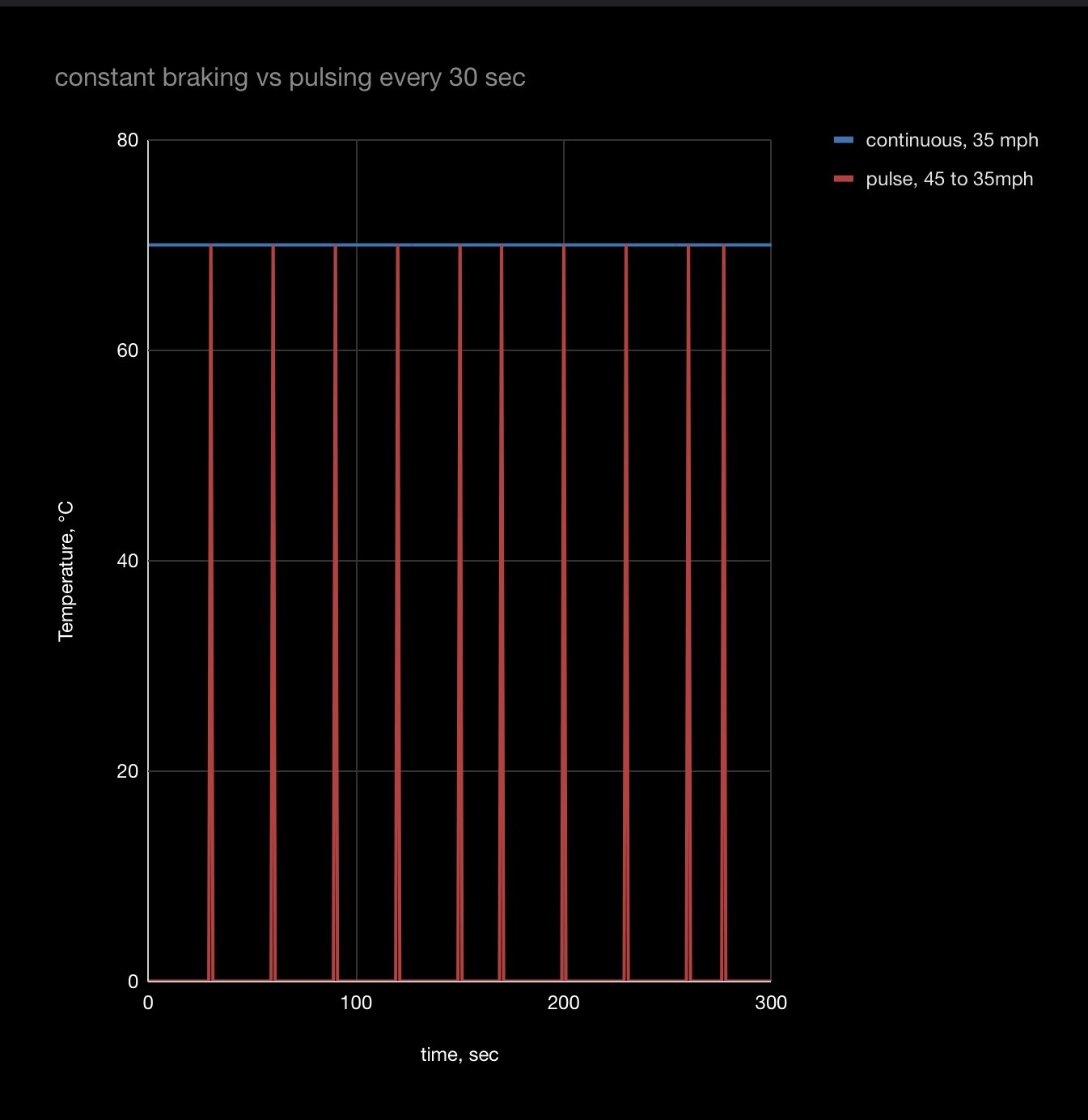I still stand by that statement.
From you post just now, your answer has changed to:
Perhaps I should have said “almost” as cool. It would be mostly a wash (more on that later). But continuously squeezing the brakes to reduce the speed only 0.5mph is an absurd argument.
You're starting to understand. Well done. FYI it's not "as cool as", it's "cooler".
Nope and I’ll show you why in a bit.
If you're not comfortable with emotionally accepting dragging being able to win the heat competition with 0.5 mph slower, feel free to change that to 0.1 mph, or 0.0001 mph slower. The point is, as the braking force reduces to approaching zero, the heat being put into the rims also approaches zero. At that point the rim temperature approaches zero degrees above ambient, even though the brakes are still being "constantly dragged". This is clearly visualized in the graph in the book. If you need a reminder go back and have a look at it again.
Slicing the speed ever thinner doesn’t make your point any less absurd. There are seeds of what I’ve been saying in your comments however. You are correct in saying when braking force is reduced to zero, the heat being put into the rims is zero. That’s the point of pulse braking.
Now we get to the “later”. Drag braking can’t result in cooler rims under the same conditions. Let’s assume that all conditions are the same…system weight, straight run, air resistance, etc. We’ll use Wilson’s chart even though the slope is extreme. He has a graph and I can use those numbers. When in doubt, make a graph. In the graphs below I’m assuming they start at steady state and end at steady state. No acceleration to get to speed nor deceleration after the time interval.
First up, let’s say the pulse braked bike is traveling at 45 mph and the ride need to slow to the same speed as the riding using constant braking. The temperature would spike quickly and then decay.

You can see in the graph that the continuous braking results in a constant 70°C rim temperature. With pulse braking, the temperature increases momentarily and then decreases. The amount of heat generated would be the area under both curves. My calculus is too rusty to do the actual integration but the area under the pulse braking curve is significantly lower than that under the constant braking.

The above graph is pulsed braking slowing from 45 mph to 35 mph over 5 minutes while braking at for 5 seconds at 30 sec intervals (sorry about the units on the time scale. Having problems with the spreadsheet). Again, the amount if heat is determined by the area under the curve. The area under the pulse braking curve is far lower than the area under the constant braking curve.

The above graph (90 sec interval) is if one rider were to constantly pulse the brakes vs constant brake application. The difference in area is smaller but the area under the pulse braking is still lower. Less heat put into the rim would mean lower rim temperature. This, by the way, would be the “slinky” pulse braking you have been referencing previously.
Now let’s get to the 0.5mph speed reduction (90sec interval). The pulse braking is being applied every 5 seconds. Temperature generated on the rims at 59.5mph is estimated to be 10°C increase. Pulsing the brakes every 5 seconds to maintain a 50 mph average would heat the rims to 25°C

If we convert that an area graph, it would be hard to say which rim would end up cooler

The graph could change a lot over a longer time frame with harder braking on the part of the pulse braker and longer cooling intervals.
Putting the absurd example aside, it is plain to see that even if you pulsed constantly, the heat put into the rim…and thus the rim temperature…is
always going to be lower than if you drag the brakes continuously.
I look forward to you telling me how wrong I am. Please provide graphs if you do so.